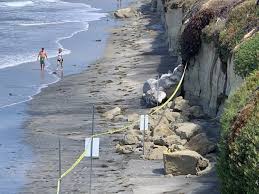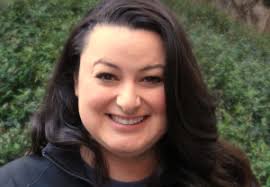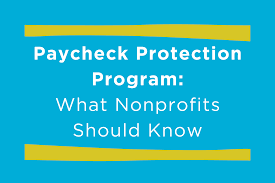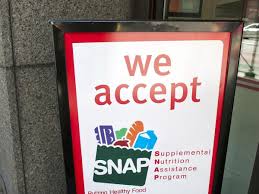|
Gov. Ron DeSantis signed a bill on Friday which, among other things, will introduce 32 new specialty license plates onto the road. The bill, sponsored by former Rep. Jamie Grant, paves the way for the 32 new specialty license plates, establishes a cap of 150 specialty license plates and formalizes a discontinuation process for low performing specialty license plates. HB 1135 also authorizes the Department of Highway Safety and Motor Vehicles to issue specialty license plates for fleet and motor vehicle dealer vehicles. The bill also provides for a redesign of the Special Olympics tag to change the slogan to “Be a Fan”; redistribution of proceeds for the “Live the Dream” license plate to be limited to Sickle Cell organizations and the Miami based Chapman Partnership, with March of Dimes and Florida Association of Healthy Start Coalitions being deleted, and the DMV now responsible to pay a 5% royalty fee to the Martin Luther King Jr. Center for Nonviolent Social Change, Inc. for the use of the image of Dr. Martin Luther King, Jr. ; and a change in the use of proceeds for “In God We Trust” tag with up to 90% to be utilized to provide education in public and private schools regarding the historical significance of religion in American and Florida history. The revenue from the Florida Law Enforcement Officer license plates, originally distributed to the Police and Kids Foundation, Inc., to invest and reinvest, and the interest earnings must be used for the operation of the Police and Kids Foundation, Inc., now may be directly used for the operations, activities, programs, and projects of the Police and Kids Foundation, Inc. Preserve Vision Florida is changing their name on their plate from Prevent Blindness. A cap of 150 plates is now in place, with 32 new plates created by the bill, provided they meet the presell requirementswith the current number of plates at 122. To create the new plate, the organization must submit its proposed art design to DHSMV as soon as practicable, but no later than 60 days after October 1, 2020 . Within 120 days from October 1, 2020, DHSMV must establish a method to issue a specialty license plate voucher allowing for the presale of such plate. The $5 processing fee, the service charge and branch fee, and the annual use fee for the specialty license plate are charged for the voucher. All other applicable fees are charged at the time the license plate is issued. The presell is now 3,000 (4,000 for out of state colleges) The bill provides that new specialty license plates that have been approved by law but are awaiting issuance will be issued in the order they appear in s. 320.08058, F.S., provided all requirements, including the presale requirement, have been met. If the next awaiting specialty license plate has not met the presale requirement, DHSMV must proceed in the order provided in law to identify the next qualified specialty license plate that has met the presale requirement. DHSMV must cycle through the list in statutory order. If the Legislature has approved 150 or more specialty license plates, DHSMV may not make any new specialty license plates available for design or issuance until a sufficient number of plates are discontinued so that the number of plates being issued is reduced to fewer than 150. DHSMV must cycle through the list in the following statutory order:
The bill requires DHSMV to discontinue the specialty license plate with the fewest number of plates in circulation, including license plates exempt from a statutory sales requirement on January 1 of each year. For the specialty license plates in the bottom 10 percent of sales, the bill requires DHSMV to mail a warning letter to the sponsoring organizations. Effective July 1, 2023, the bill requires DHSMV to discontinue the issuance of approved specialty license plates if the number of valid registrations falls below 3,000 plates (4,000 for out of state colleges) for 12 consecutive months. In addition to the existing exemption from the 3,000 plate sales requirement for in-state collegiate license plates, the bill provides exceptions from the discontinuance requirement for license plates: · For institutions in and entities of the State University System; · With statutory eligibility limitations for purchase; · For which the annual use fees are distributed by a foundation for student and teacher leadership programs and teacher recruitment and retention; and · Florida Professional Sports Team license plates. The bill requires DHSMV, in cooperation with the independent colleges and universities, to create a standard template specialty license plate with a unique logo or graphic identifying each independent college or university. Each independent college or university may elect to use this standard template specialty license plate in lieu of its own specialty license plate. Annual use fees from the sale of these license plates are distributed to the independent college or university for which the logo or graphic is displayed and must be used as provided in s. 320.08058(3), F.S. Independent colleges and universities opting to use the standard template specialty license plate will have their plate sales combined for purposes of meeting the 3,000 plate minimum sales threshold and determining the 150 plate limit. These plates must be ordered directly from DHSMV. Prior to the development of an out-of-state college or university license plate, DHSMV must have documentation on file indicating the college or university has consented to use an appropriate image on the license plate. The bill prohibits any entity from using specialty license plate revenue for lobbying. The current prohibition is limited to agencies. According to Kevin Jacobs, Deputy Director of Legislative Affairs, Department of Highway Safety and Motor Vehicles, creation or modification of specialty and special license plates require system programming to implement. Depending on the number of distributions tied to the plate, the amount of programming may vary as will the resources needed to complete the changes. The average specialty/special license plate with a single distribution requires approximately 200-250 hours of programming, at a rate of $35 to $40 per hour. The bill creates 32 new specialty license plates, four new special license plates and removes from law five specialty license plates that have been discontinued. While DHSMV has not determined its fiscal impact, it is likely to be between $7,000 and $10,000 per plate created. Many existing plates had to pay a fee of $60,000.00 to cover those costs in the past. DHSMV states the cost to perform an audit every three years of each specialty license plate may result in a workload impact that can also be absorbed within existing resources.
DeSantis signed the bill on the eve of Rosh Hashanah, the “Florida Stands with Israel” tag was originally submitted to the House in a separate bill co-sponsored by House Minority Leader Kionne L. McGhee and Rep. Scott Plakon. “This shows that our relationship with the State of Israel touches upon many of Florida’s most vital interests, values, and ideals,” the pair said in a joint statement. “Accordingly, the overwhelming majority of Floridians support this special relationship and now have a wonderful way to celebrate it.” Plakon in a separate statement recognized the plate’s symbolic passage. “I cannot think of a sweeter way to wish Florida’s Jewish community a Shana Tova – Happy New Year!” he added. Current law prohibits the redesign of a specialty license plate unless the inventory of the license plate has been depleted. However, the organization may purchase the remaining inventory of the specialty license plate from DHSMV at the department’s cost.133 Special Olympics Florida may be required to purchase the remaining inventory of its specialty license plate at DHSMV’s cost prior to the authorized redesign of its license plates.
0 Comments
 Wayne LaPierre with President Donald Trump Wayne LaPierre with President Donald Trump New York state's attorney general sued to dissolve the National Rifle Association on Thursday, alleging senior leaders of the non-profit group diverted millions of dollars for personal use and to buy the silence and loyalty of former employees. The lawsuit announced by Attorney General Letitia James alleges NRA leaders paid for family trips to the Bahamas, private jets and expensive meals that contributed to a $64 million reduction in the NRA's balance sheet in three years, turning a surplus into a deficit. James alleged in a statement that NRA leaders "used millions upon millions from NRA reserves for personal use," failing to comply with the NRA's own internal policies in addition to state and federal law. The confrontation pits James, a Democrat, against the largest and most powerful gun organization in the United States, one that is closely aligned with President Donald Trump's Republican Party. The action is certain to further polarize a country where the NRA is revered by conservatives as a champion of the U.S. Constitutional right to keep and bear arms and vilified by liberals as an enabler of rampant gun violence. "The NRA's influence has been so powerful that the organization went unchecked for decades while top executives funneled millions into their own pockets," James said in a statement. "The NRA is fraught with fraud and abuse, which is why, today, we seek to dissolve the NRA, because no organization is above the law." The NRA, which teaches gun safety in addition to advocating laws making it easier for Americans to own guns and ammunition, is subject to New York law because it is registered as a non-profit organization in New York, where it conducts most of its financial transactions. The NRA, which has its national headquarters in Fairfax, Virginia, about 20 miles (30 km) west of Washington, D.C., did not immediately respond to a request for comment. New York state and the NRA have tangled before. The state has taken legal action against NRA-branded insurance policies sold to gun owners, and the NRA is suing the state for closing gun stores under an executive order to halt the spread of COVID-19.
The latest lawsuit names the NRA as a whole and four senior executives of the group including Wayne LaPierre, the executive vice-president who has been atop the leadership for decades. It also names former Treasurer and Chief Financial Officer Wilson Phillips, former Chief of Staff and Executive Director of General Operations Joshua Powell, and Corporate Secretary and General Counsel John Frazer. The suit charges the NRA with "awarding contracts to the financial gain of close associates and family, and appearing to dole out lucrative no-show contracts to former employees in order to buy their silence and continued loyalty," James's office said in a statement. "The failure of the NRA to comply with multiple fiduciary responsibilities and state and federal laws resulted in the NRA seeing substantial losses on its balance sheet: going from a surplus of $27,802,714 in 2015 to a net deficit of $36,276,779 in 2018 - contributing to a total loss of more than $64 million in just three years," the statement said. In addition to attempting to close down a group that has existed since 1871, James seeks to recover millions of dollars in lost assets and to stop the four executives from serving on the board of any other not-for-profit group in the state. (Reported by Daniel Trotta and David Shepardson; Editing by Howard Goller - Reuters) Proposition 15: Increases Funding for Public Schools, Community Colleges, and Local Government Services by Changing Tax Assessment of Commercial and Industrial Property. Initiative Constitutional Amendment. Yes/No Statement A YES vote on this measure means: Property taxes on most commercial properties worth more than $3 million would go up in order to provide new funding to local governments and schools. A NO vote on this measure means: Property taxes on commercial properties would stay the same. Local governments and schools would not get new funding.  Dr. Priscilla Chan and Mark Zuckerberg Dr. Priscilla Chan and Mark Zuckerberg The Legislative analysis states that increased property taxes on commercial properties worth more than $3 million will provide $6.5 billion to $11.5 billion in new funding to local governments and schools. 60% would go to cities, counties, and special districts. Each city, county, or special district’s share of the money depends on several things including the amount of new taxes paid by commercial properties in that community. Not all governments would be guaranteed new money. Some in rural areas may end up losing money because of lower taxes on business equipment. The other 40% would increase funding for schools and community colleges. Each school or community college’s share of the money is mostly based on how many students they have. ‘Property’ Includes Land, Buildings, Machinery, and Equipment. The measure requires commercial and industrial (after this referred to simply as “commercial”) land and buildings to be taxed based on how much they could be sold for instead of their original purchase price. This change is put in place over time starting in 2022. The change does not start before 2025 for properties used by California businesses that meet certain rules and have 50 or fewer employees. Housing and agricultural land continues to be taxed based on its original purchase price. The measure reduces the taxable value of each business’s equipment by $500,000 starting in 2024. Businesses with less than $500,000 of equipment pay no taxes on those items. All property taxes on business equipment are eliminated for California businesses that meet certain rules and have 50 or fewer employees. The Chan Zuckerberg Initiative (CZI) was founded by Dr. Priscilla Chan and Mark Zuckerberg in 2015, and according to the website, is a new kind of philanthropy that’s leveraging technology to help solve some of the world’s toughest challenges — from eradicating disease, to improving education, to reforming the criminal justice system. To date, CZI has granted $1.805 million to the campaign and is contributing an additional $4.5 million, bringing total support for the measure to just over $6.3 million. CZI is also granting $1 million to the No on Proposition 20 campaign to oppose a measure that would incarcerate more people for low-level crimes and increase already bloated prison budgets. “For generations, there has been profound inequity in the way we resource local services — with disinvestment over time and an increasingly limited ability for local communities to address their most pressing needs,” said Michael Troncoso, Head of Justice & Opportunity at CZI. “Even before COVID-19, Black and Brown communities have lacked the resources needed to sustain adequate local health care systems, protect essential workers, and support our schools. This systematic disinvestment was built into the law, and we now have the historic opportunity, through Proposition 15, to correct it and get our communities the support they need.” Campaign Finance Reports from the Secretary of State show the payments made by CZI.
Surfing advocates and California’s Coastal Commission rained ire this week on a bill that would allow San Diego and Orange county homeowners to build seawalls by right, sidestepping commission oversight. Seawalls are highly controversial in California, viewed as a property defense against sea-level rise and the crumbling of coastal cliffs. At the same time, seawalls prevent the natural replenishment of beach sand from cliff faces and land runoff. Republican Sen. Pat Bates, who represents portions of San Diego and Orange counties, brought SB 1090 before the Senate Natural Resources and Water Committee allowing testimony from pre-selected speakers. The father of an Encinitas family that lost three members when a cliff collapsed on top of their weekend picnic last year gave emotional testimony on behalf of the bill. “There is no plan for sand replenishment or any other bluff changes to increase safety on this very popular stretch of beach where my accident occurred,” said J. Patrick Davis, a pediatric dentist. Seawalls, or “hard armoring” as Surfrider Foundation’s scientist Jennifer Savage called the structures, do not make beaches safer, she said. “They destroy the beach by speeding-up erosion,” Savage said.  The Coastal Commission representative argued the Encinitas incident was a tragic accident, not due to a lack of action by the commission to approve or deny a seawall in the area. “The bill is designed to make it faster, easier and cheaper to build seawalls primarily to protect private residential development,” Sarah Christie, the commission’s legislative director, testified. “For every seawall that is built, the public loses a beach.” There was no committee vote, however. Sen. Henry Stern, the committee chair, and Bates agreed ahead of time to hear the bill without the vote, and testimony was heard on May 26, 2020. said Josh Kirmsse, Stern’s communications director. The Committee Analysis states that for Orange and San Diego Counties, this bill would effectively authorize by-right construction of sea walls/other hard shoreline structures and only allow the commission or a local government to deny an application for a shoreline protective device only if they determine that the construction of a shoreline protective device would constitute a substantial threat to the public health or safety. It also seeks to prohibit a state agency or local government to adopt an ordinance, regulation, policy or rule that is inconsistent with these requirements. Supporters of the bill include California Apartment Association, California Association of Realtors, Newport Beach Association of Realtors, North San Diego County Association of Realtors, Oceanside Chamber of Commerce, Orange County Realtors, County of San Diego, and ‘four individuals’.  Marce Gutierrez-Graudins Marce Gutierrez-Graudins Opposers to the bill included Azul. Azul was founded in 2011 by Marce Gutierrez-Graudins, to bring Latinxs perspectives and participation to ocean conservation, and are legally organized under the Trust for Conservation Innovation. After experiencing how mainstream ocean conservation efforts and campaigns were leaving Latinxs out, Marce decided to start Azul to engage her community in protecting coastal resources and marine life. In a joint sign-on letter expressing strong opposition, Azul, among others, writes that SB 1090 “would pave the way for private property owners to effectively hasten and accelerate the loss of public beaches from the Orange County and San Diego coasts under the guise of claiming to improve public safety.” Others who registered in opposition to the bill were California Coastal Protection Network, Heal the Bay, California Coastal Commission, California Coastkeeper Alliance, California League of Conservation Voters, California Native Plant Society, Center for Biological Diversity, Clean Water Action, Defenders of Wildlife, Natural Resources Defense Council, Plastic Pollution Coalition, Seventh Generation Advisors, Sierra Club California, Surfrider Foundation, The 5 Gyres Institute, The Center for Oceanic Awareness, Research, and Education (COARE), The Honorable Betty T. Yee, California State Controller, and the Nature Conservancy. Senators will do more work on the legislation at the committee level. The bill analysis also states that erosion will be exacerbated by the presence of sea walls on the seaward size of the sea wall. Public accessibility will be correspondingly compromised. Beaches need natural erosion and sediment transfer for their health. Living shorelines, soft armoring and managed retreat, if necessary, should be prioritized. How can shoreline armoring be “designed to mitigate or protect against coastal erosion” as it is known to exacerbate that very thing? It also comments that the bill provides an implicit public subsidy to private landowners.
Click here for the full bill text. 22,000 nonprofits will close their doors for good in the next 3 years? Michael Towner, Iconic Legacy7/23/2020  It is projected that 22,000 nonprofits will close their doors for good in the next 3 years as a result of the economic crisis. That's the median of several scenarios projected by Candid; it assumes the economic downturn will last 24 months. The 22,000 figure represents a failure rate of 7% among the 315,698 U.S.-based nonprofits whose financial data Candid examined in a new study. Dan Parks reports the new paper presents a less dire forecast than many experts have predicted. "The majority of nonprofit organizations are positioned to weather this storm," the report states. Some charities are hailing the Paycheck Protection Program as a financial saviour, but others say it provided only a brief respite from layoffs and other cost-cutting measures. According to new estimates from the Dorothy A. Johnson Center for Philanthropy at Michigan’s Grand Valley State University, the program saved 4.1 million nonprofit jobs, about a third of all nonprofit jobs in the nation. The study estimated that about 40 percent of eligible nonprofits received a loan and that nearly two-thirds of eligible nonprofit jobs were protected by PPP funds. The study noted that many smaller nonprofits in particular may have missed out by either not applying for loans or not successfully filling out applications. Which kinds of groups have gotten the money so far? Religious organizations, followed by elementary and secondary schools, and civic, social, or social-advocacy organizations, were the most common recipients of PPP loans, According to the data, 42,462 nonprofit organizations received loans of between $150,000 and $10 million. The goal of the Paycheck Protection Program is to encourage employers to keep their workers on the payroll during the coronavirus pandemic. If employers maintain their work force, the loans are mostly forgivable. Of those 42,462 nonprofits, 9,238, or 21.8 percent, were religious organizations; 5,647, or 13.3 percent, were elementary and secondary schools; and 6.3 percent were civic, social, or social-advocacy organizations.  In a survey conducted by the Association of Fundraising Professionals members conducted in May, 2% of respondents said they had been laid off. 20% said their organizations had laid off staff, 23% percent said they had instituted furloughs, and 18% had cut staff pay. Groups that have long relied on in-person fundraising events or revenue from ticket sales are making tough decisions about which fundraising roles are indispensable. Organizations have not eliminated fundraising positions at the same pace that they have laid off people in other departments, says Mike Geiger, President of the Association of Fundraising Professionals. "So far, our numbers are really low in terms of fundraisers being laid off," he says. "I think that is because organizations understand the importance of keeping revenue-generating positions. Fundraisers are the bridge between the donor and the cause. If you break that bridge, if you destroy that bridge, you lose that connection. I think that a lot of CEOs get that, and they might get it now more than they ever did." But even for CEOs and other leaders who understand and value their fundraisers, making staffing decisions when revenue is drying up is a tough balancing act. What is clear is that some organizations and fundraising teams have been harder hit than others. The American Cancer Society has long relied on large in-person fundraising events. And Covid-19 has hit that model especially hard. As events had to be postponed and ultimately canceled or shifted online, the Cancer Society quickly realized it would have to cut costs. The organization did not go to personnel right away, says Mike Neal, the senior executive vice president for field operations. First, it looked to reduce expenses for things like meetings and travel, and postponing events like the Relay for Life walks resulted in some cost savings. But in June, the charity laid off around 1,000 staff members. About 200 were fundraisers, Neal says. The group expects to bring in around $200 million less in 2020 than it had forecast before the coronavirus struck. Smaller groups are also making these tough choices. Cherian Koshy is director of development at Des Moines Performing Arts, an organization that presents visiting plays and other performances — all of which have been canceled or postponed indefinitely. Despite "exceptional" fundraising in recent months, there is no getting around the fact that the organization's business model is partially driven by the money it earns from ticket sales. "Even with a lot of fundraising that has happened over the course of these last few months and the generosity of our donors, it's not enough to keep our entire staff at that total 100 percent, especially when we don't have a date to reopen," he says. So far, Koshy has not had to lay anyone off, but he has had to cut hours. As of July 1, his development team of five people is working the equivalent of 3.5 full-time jobs. "When we talk about lifeboat ethics, there's no good decision about who needs to be tossed off the boat and who gets to stay on," he says. "Everybody's roles are essential in some nature; otherwise, they wouldn't be on the boat in the first place." At some organizations, veteran development directors and senior leaders are getting virtual pink slips, too — delivered via Zoom or over the phone. Barbara Perlov was laid off from her position as director of foundation and government relations at the Boys' Club of New York at the end of March.
The organization has historically relied on wealthy individuals and events, but Perlov was leading the charge to increase support from institutional donors. And even through the pandemic, she saw great potential. She had been working to build relationships with grant makers. Getting the news of her layoff "was shocking," she says. "No doubt about it." "Just getting my head wrapped around the fact that my job was ending was pretty emotional," she says, "not to mention, the personal things going on in my life that I needed to address: what I was going to do about health care, about applying for unemployment." Fundraisers — those who are recently unemployed and those who are plugging away from their home offices — are facing compounding stressors right now. Several fundraisers have lined up part-time consulting work to pay the bills and support organizations in their efforts to raise money through the crisis.  Food stamps — formally known as the Supplemental Nutrition Assistance Program, or SNAP — support young and old, healthy and disabled, the working and the unemployed, making it the closest thing the United States has to a guaranteed income. Though administered by states, the benefits are paid by the federal government, with no spending cap, and the program has largely avoided the delays that have plagued unemployment insurance. After long pushing to reduce SNAP usage, claiming it promotes dependency and waste, the Trump administration eased administrative rules during the pandemic to speed enrollment. Two Republican-led states, Florida and Georgia, have expanded caseloads the most, and state officials from both parties have called the program an essential antipoverty tool. About 43 million people — roughly one of every eight Americans — now receive SNAP. More than six million people enrolled in food stamps in the first three months of the coronavirus pandemic, an unprecedented expansion that is likely to continue as more jobless people deplete their savings and billions in unemployment aid expires this month.  Thirty states have experienced double-digit growth, and usage has risen in all 133 counties in the three West Coast states. About 50,000 people have joined the rolls in the county that includes Atlanta, more than 100,000 in the county that includes Detroit and more than 200,000 in those that include Miami and Los Angeles. No state has seen more growth than Florida, which has added nearly a million residents to the rolls. Among the new centers of SNAP usage is Orlando, where a region known for flights of fantasy became a center of nutritional need. With amusement parks closed and tourism vanishing, caseloads in Orange and Osceola Counties rose more than 50 percent, adding nearly 125,000 people. From February to May, the program grew by 17 percent, about three times faster than in any previous three months, according to state data collected by The New York Times. Its rapid expansion is a testament to both the hardship imposed by the pandemic and the importance of a program that until recently drew conservative attack. The rolls have surged across Appalachian hamlets, urban cores like Miami and Detroit, and white-picket-fence suburbs outside Atlanta and Houston, rising faster in rich counties than in poor ones, as the downturn caused by the virus claimed the restaurant, cleaning and gig economy jobs that support the affluent. Despite SNAP’s expansion, surveys continue to show high rates of “food insecurity” — reduced quality of food or uncertain access — as well as outright hunger. A new survey by the Urban Institute found 17.7 percent of adults report food insecurity, much higher than pre-crisis levels. The rate for Black people and Latinos was about twice as high as for whites.  As Congress returns this week, Democrats want to increase the maximum benefit by 15 percent, noting that food prices have risen to the highest level in nearly a half-century. Aside from SNAP, there is a growing need for nonprofit services during and after the pandemic that will outpace the capacity and resources of organizations and according to a recent report, the possibility that 10% to 40% of nonprofit groups will be forced to close or merge with other ones, and there will be much less government money to help pay for the services organizations deliver. The Trump administration says that the next coronavirus aid package, which is expected to top $1 trillion, should focus on 'kids and jobs and vaccines.' Negotiations between congressional Republicans and the White House hit snags over the weekend and talks between the GOP and Democrats have been nearly non-existent. Treasury Secretary Steve Mnuchin said that Republicans are committed to passing legislation by the end of the month to protect unemployed Americans who have been receiving enhanced benefits, though he suggested it won't be as much as the current level of $600 extra in unemployment insurance per week. "We're going to make sure that we don't pay people more money to stay home than go to work. We want to make sure that people who can go to work safely can do," he said. "We'll have tax credits that incentivize businesses to bring people back to work. We'll have tax credits for PPE for safe work environments, and we're gonna have big incentives, money to the states for education for schools that can open safely and and do education." Republicans also want to offer liability protections for schools, colleges, charities, businesses and frontline health care workers and employers who follow public health guidelines. "We don’t need an epidemic of lawsuits on the heels of a pandemic," said McConnell. Some Senate Republicans are pushing back against a White House attempt to block billions of dollars for coronavirus testing and tracing contacts of individuals infected with the coronavirus, two Republican sources told NBC News on Sunday. News of the White House push to block the funding was first reported by The Washington Post. Congress doesn’t have much time to negotiate and pass the legislation — lawmakers have only a few weeks left in Washington before their annual summer recess in August which will be focused on their own interests of campaigning, collecting campaign contributions and the two parties’ conventions in advance of the November election with no mention by either party of any extended session to address the resurgence of the pandemic. For more, click here.
In 2014, the mobile camera company GoPro went public, and Nicholas Woodman, the company’s founder and chief executive, was suddenly worth about $3 billion. Later that year, Woodman and his wife, Jill, announced they were establishing a foundation with about $500 million worth of GoPro stock. The foundation, however, was a donor-advised fund. A 2018 New York Times story noted that, four years later, Woodman’s foundation had no website and hadn’t appeared to have funded any significant charitable operations. Google co-founder Larry Page’s use of DAFs has also raised concerns. Last December, an analysis by Recode found Page had stocked more than $400 million in DAFs from 2015 to 2017. In December 2017, Google co-founder Larry Page made what appeared to be generous donations to two charities. To one charity, according to tax records filed by Page’s foundation, he gave $100 million in cash and stock. To the other, records show, Page gave $80 million in cash. Two and a half years later, it’s unclear if any of that money funded any charitable works, or if it’s all still sitting in accounts mostly controlled by Page, collecting interest and earning investment income. That’s because the organizations on the receiving end of Page’s donations were not working charities — such as the American Red Cross or the United Way — but donor-advised funds, a controversial and booming form of philanthropy attracting increasing scrutiny and criticism amid the coronavirus pandemic, as charities face a historic crisis. Page did not reply to a request for comment for this story. Spokesmen at the organizations that received his donations in 2017 — Schwab Charitable and the National Philanthropic Trust — declined to comment, citing privacy rules. Known in the industry as DAFs (rhymes with calves) — and criticized by some insiders as “zombie philanthropy” — the money and assets in donor-advised funds are intended to go to charity some day, but there are no payout requirements, and money can sit in a donor-advised fund for decades. DAFs are the fastest growing form of charitable spending in America, with more than $120 billion in DAF accounts across the country in 2018, according to the most recent industry estimates, up from $45 billion just six years earlier. And while some executives who oversee these funds say critics exaggerate potential abuses, the coronavirus pandemic has prompted a few wealthy DAF users to express rising concern about the way these funds are managed. “Charities are slammed for work, needing to do more than ever before … and yet this $120 billion is still sitting there … It’s kind of crazy,” said David Risher, a former Microsoft and Amazon executive who — with his wife, Jennifer — launched the #HalfMyDaf campaign in May to try to inspire donors to pay out at least half the money in these accounts to charities this year. “The money is sitting there because people often have a plan for their philanthropy,” said Jennifer Risher, a former manager at Microsoft and author. “Well, the world is not on plan right now. Now is the moment.” The Rishers’ echoed concerns raised by Kat Taylor — philanthropist, banking executive and wife to hedge fund manager and former presidential candidate Tom Steyer — who is a vocal critic of the DAF system and has supported draft legislation in California this year that would require more oversight and impose transparency obligations on these funds. “They were created without, I think, as much oversight and foresight as we should have given them,” Taylor said. “These are the piggy banks of charity. We should be breaking our piggy banks right now.” The rise of what some critics denounce as “a perversion of the tax code” traces its roots to 1969, when Congress rewrote the tax code to favor public charities over private foundations, imposing more taxes on private foundations and requiring more public information on their finances. To Norman Sugarman, a former IRS attorney in Cleveland, this created both concern and opportunity. Sugarman represented community foundations fearful the new law would scare off donors. “For him, it was important that, no questions asked, these [community foundations] were public charities,” said Lila Corwin Berman, a history professor at Temple University who has written about Sugarman’s role in the popularization of DAFs. “He believed most social problems could be better solved by charity than government, and that individuals should have more control over what their wealth could do for society.” Sometimes, however, the money is just moving from one donor-advised fund to another donor-advised fund. A 2017 analysis by the Economist magazine of data from three of the largest donor-advised funds found two of the three largest recipients of their charitable spending were other donor-advised funds. (Account holders can move money and assets from one fund to another in search of better fees.) “You start to kind of wonder … where is all the money?” David Risher said. “And then you realize that you have these funds that have more than $120 billion parked in them … and when you look at a system like this, you start to realize that there are financial incentives at some organizations, where the status quo is working pretty well for them.” Original story by Will Hobson, Washington Post. Click here for more.
With just a few days remaining until the June 15 constitutional deadline for enacting a 2020-21 budget, Gov. Gavin Newsom and his fellow Democrats in the Legislature are engaged in a debate over closing a deficit that Newsom pegs at $54 billion. It is essentially a conflict over how much direct relief, if any, California can expect from President Donald Trump and Congress to cover about $15 billion of the deficit that would remain after other actions have been taken. Newsom had proposed a $222 billion budget in January and then discarded it after the pandemic struck. He ordered a widespread shutdown affecting economic and personal behavior to deal with it, thus triggering a recession that erased millions of jobs in just a few weeks. In May, Newsom proposed a revision to his budget proposal that would cut spending to $202 billion and cover the remainder of the gap with some new revenues, some borrowing and some accounting maneuvers. He said $15 billion in cuts, mostly to K-12 education and colleges, would be automatically restored if the state received the federal aid that a $1 trillion House-passed relief bill promised. Clearly, he intended that cutting the most popular segments of the budget would help spur federal action. It was, however, too much for legislators to digest as they were hit with pleas from hundreds of advocates for services targeted in Newsom’s budget. Of course, there is the other option — raising taxes. In fact, tax increases of some kind have been used in every major budget crisis of the past half-century. The Senate’s Democratic leaders proposed, and the Assembly’s leadership later supported, a 180-degree shift from Newsom’s proposal. It would essentially retain the spending he cut on the assumption that the Federal Government will cough up the additional relief, and make reductions in the fall if the money does not materialize. So despite lots of common ground on the upcoming budget, some key disagreements have surfaced as legislative leaders and Gov. Gavin Newsom hammer out a final deal in advance of a June 15 deadline. What is different this time: The two sides are negotiating amid a bleak economic scenario, with surging unemployment, greater demand for government services and a deficit that could be as large as $54 billion. And that, undoubtedly, amps up the stress in their private debates. The fault lines this year show the Legislature and governor at odds over how to manage spending on the coronavirus pandemic, how far the state should go to help undocumented immigrants, and how much to cut schools and safety net programs if the federal government does not come through with additional aid. While Newsom proposed slashing $14 billion from schools, health care and safety net programs unless the federal government sends funds by July 1, the Legislature’s proposal assumes federal funding will arrive — and if it doesn’t come by Oct. 1, limits cuts to $7 billion by drawing on reserves. Another schism arose over how much the state should spend to help undocumented immigrants, with lawmakers wanting to go further than Newsom does in extending health care and tax breaks. Newsom will likely be in the role of saying “no” to a bunch of legislators who are unaccustomed to governing during a recession. “The definition of good legislation is a compromise that is mutually repugnant to all sides,” said political analyst Sherry Bebitch Jeffe. “And that’s what has to happen.” The only certainties are that a budget deal of some kind will be made by June 15, to protect legislators from losing their salaries, and that whatever they enact will be changed repeatedly over the next year as circumstances evolve. The only certainties are that a budget deal of some kind will be made by June 15, to protect legislators from losing their salaries, and that whatever they enact will be changed repeatedly over the next year as circumstances evolve. Schools As for the schools reopening in the fall of 2020, expect students in face masks at all times; temperature checks at the school entrance and a mix of in-class and online learning. These are just some of the new protective guidelines released on June 8, to more than 10,000 public schools across California as they plan for a much different reopening in the fall. State Superintendent of Public Instruction Tony Thurmond described the 62-page document as a checklist for schools to consider, however, the recommendations illustrate a number of drastic changes that will need to be made in order for students to return to their classrooms while practicing social distancing. “We know this is just the beginning,” he said. School districts are planning for the new school year under the financial stress of steep proposed cuts in state funding, which Thurmond and a group of education advocates have said would hamper schools’ ability to reopen if federal assistance doesn’t arrive to cushion the blow. Using state examples, here’s what a school day might look like from start to end: - A student riding the bus to school would wait at their bus stop already equipped with a face covering. Once the bus arrives, there would be seating meant to reduce capacity – one option the guidance suggests is a “zigzag pattern” in which seating by row would be limited to one student on alternating sides. - Either on the bus or as they enter campus, the student would have their temperature screened with no-touch thermometers while answering questions from staff about whether they experienced any COVID-19 symptoms, and if anyone in their home has tested positive or has shown symptoms. - The student would be in class with a smaller group of classmates. Desks would be spaced six feet apart or more. Teachers too would wear face coverings. - Everyone handwashes frequently. - During recess, schools might consider increasing supervision to make sure students are practicing social distancing. To avoid crowded cafeterias, the student would either eat their lunch in class or with their group of classmates under staggered lunch times. - Throughout the day, employees would clean and disinfect areas across campus. Perhaps the most extreme measure, the state’s guidance anticipates schools would adopt hybrid schedules. That means students either attend school on select days of the week, or most weekdays under staggered start times and shorter hours. Hybrid scheduling, Thurmond said, would help schools reduce their classroom sizes while accommodate parents who want to keep their children home under distance learning. “Many of our districts have surveyed their parents and have said that they would like to have the option for distance learning,” Thurmond said. The state’s guidance also urges schools to consider plans for if and when campuses would have to temporarily close in the fall due to local outbreaks. Choke Holds/Carotid Holds California's Assembly speaker and other key lawmakers have backed making it illegal statewide for police to use a type of neck hold that blocks the flow of blood to the brain, a proposal that appears to go beyond any other state. Major law enforcement groups did not immediately say if they would oppose the move, which comes after a different restraint used by Minneapolis police was blamed for the death of George Floyd, triggering ongoing nationwide protests. However, the Los Angeles Police Department announced an immediate moratorium on the training and use of the hold until the civilian Board of Police Commissioners can review the issue. Police departments in suburban Pasadena and El Monte and in Santa Ana in Orange County also have suspended use of the technique. Assembly Speaker Anthony Rendon endorsed legislation that fellow Democratic Assemblyman Mike Gipson said he will amend to make it illegal to use chokeholds and a carotid artery restraint tactic to forcibly detain a suspect. Officers would still have a variety of tools to control suspects if the hold is banned, ranging from voice commands to night sticks, Tasers, pepper spray and firearms. Sen. Maria Elena Durazo, a bill co-author, said 23 California law enforcement agencies have already limited its use, several in the last week. On Friday, San Jose Police Chief Eddie Garcia said his department still allows the carotid hold as a last option before lethal force. On Monday he said in a statement that his department already bans chokeholds — which he said are distinct from carotid holds. Chokeholds apply pressure from the front and stop the individual from breathing, while carotid holds are from the side. Regardless of the outcome of the budget negotiations, and the end of the George Floyd demonstrations, we now enter the fire season amidst a pandemic. While opportunities abound for a few, the many will indeed continue to suffer.
As someone said recently - "2020? I want to tell 2020 that I've had enough, I want to get off and I'll walk from here."  Based on factors like political stability, corporate governance, risk environment and supply chain logistics and transparency, FM global paired these rankings with their country’s initial response to the virus, and identified the nations across the globe that have a high likelihood of maintaining stability and resilience through the crisis. To capture the United States’ broad geographic footprint, the index split up the country into West, Central and East regions, but as a whole, the US ranked well (9th, 11th and 22nd, respectively) for its low-risk business environment and strong supply chain. Top 10 most resilient countries, according to the 2019 Global Resilience Index 1. Norway 2. Denmark 3. Switzerland 4. Germany 5. Finland 6. Sweden 7. Luxembourg 8. Austria 9. US Central 10. United Kingdom Danish culture, which tends to be trusting of authority and willing to stand together for a common cause, has also had an impact on the effectiveness of the measures. “The word ‘samfundssind’ (which roughly translates to “civic sense” or “civic duty”) is the new buzzword in Denmark on both social and traditional media, and most people feel a moral duty to make sacrifices for the sake of public health,” said Aarup Christiansen. “No-one wants to be called out for being responsible for endangering the lives of senior citizens just because they won’t give up their usual luxuries.” Ranked 12th-most resilient in the index, New Zealand scores especially high in corporate governance and its supply chain. The country has also been able to move quickly to contain the spread of the virus by shutting borders to international travellers on 19 March and enacting a non-essential-business lockdown on 25 March. See the full list here The $2 trillion stimulus bill expands the charitable deduction to all taxpayers for a year, makes nonprofits eligible for federal loans that could be largely forgiven, and boosts tax incentives for corporate giving, according to nonprofit analysts. Currently, only people who itemize their taxes can claim charitable deductions. The stimulus bill will allow nonitemizers to deduct up to $300 in cash giving for the 2020 tax year, according to an analysis of the legislation by the National Council of Nonprofits. Donations to donor-advised-fund accounts would not qualify for the nonitemizer deduction, according to Dean Zerbe, national managing director at AlliantGroup and a former top tax aide for the Senate Finance Committee. Nonprofits have long sought a "universal deduction," especially since the tax law of 2017 roughly doubled the standard deduction and sharply reduced the number of people who itemize their taxes. The Senate voted unanimously Wednesday to pass the bill. The House is expected to approve it today, and President Trump has said he will sign it. For those who itemize, the bill lifts the cap on annual giving from 60 percent of adjusted gross income to 100 percent. For corporate charitable giving, the bill raises the annual limit from 10 percent to 25 percent of taxable income. The cap on deductibility of food donations from corporations would increase to 25 percent of taxable income, up from the current 15 percent cap. More Help for Nonprofits
Other provisions of the bill affecting charities, according to the National Council of Nonprofits and other sources:
Although nonprofit advocates are seeking more federal help for charities than the bill provides, including a $60 billion aid package specifically for nonprofits, there was widespread approval of the legislation with hopes for more to come later, including expanding the universal deduction. "There is much to celebrate in this deal, but still a lot of advocacy needed," said Tim Delaney, president and CEO of the National Council of Nonprofits, in an emailed statement. "Additional funding resources will be absolutely critical in the months to come," wrote Charlotte Haberaecker, CEO of Lutheran Services in America. Independent Sector, a Washington-based nonprofit membership organization. By Dan Parks, Chronicle of Philanthropy. |
BLOGArchives
January 2025
Categories
All
|





